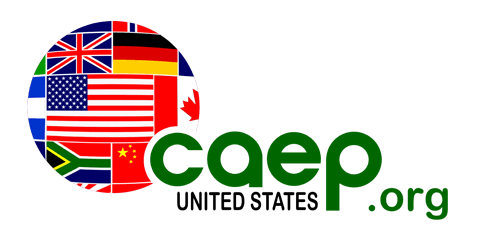Support for Exchange Visitors and Hosts
Expectations from Hosts
Hosting Responsibilities
Training Plan Information
Recruitment of Exchange Visitors
Exchange Visitor Placement Process
Accommodation Guidelines
Difference Between an "Intern" and a "Trainee"
What you can expect from CAEP?
- Age Range: Exchange visitors are typically aged 18-28 (21-35 for enology applicants).
- Experience: Applicants should have at least one year of practical experience in their field.
- Language Skills: A basic understanding of English is required.
Support for Exchange Visitors and Hosts
- Application Process: CAEP collaborates with country offices to review and interview applicants. If there's no office in the applicant's home country, interviews will be conducted through the nearest regional or corporate office.
- Placement: CAEP strives to make the best possible placements based on the information provided.
- Visa Preparation: CAEP handles the paperwork necessary for obtaining the cultural training visa.
- Arrival Coordination: We will contact hosts regarding the exchange visitor's arrival details.
- Insurance: CAEP ensures exchange visitors have adequate medical and travel insurance upon arrival.
- Ongoing Support: CAEP will follow up with both the host and exchange visitor throughout the program, including potential on-site visits and informational seminars.
- Resources: Hosts and exchange visitors receive helpful handbooks for reference.
- Feedback: Hosts will be asked to provide feedback on the placement through evaluation forms and receive newsletters with program updates.
Expectations from Hosts
- Hosting an exchange visitor is a unique opportunity for cultural exchange. We expect hosts to engage actively with the visitor and provide a supportive learning environment.
- Application Requirements: Hosts must submit a complete and updated hosting application and training plan that details the skills to be learned month by month.
Hosting Responsibilities
- Fees:
- $100.00 placement fee per exchange visitor
- $75.00 administrative fee per month per exchange visitor
- Room and Board: Hosts should assist with housing and meals for the exchange visitor.
- Time Off: Exchange visitors should have an average of 1.5 days off per week.
- Insurance: Hosts must obtain worker's compensation or appropriate liability insurance as required by state law.
- Taxes: Hosts are responsible for withholding income taxes but do not need to withhold FICA/FUTA taxes.
- Participation: Hosts should support exchange visitors in attending CAEP-sponsored seminars and events.
Training Plan Information
The U.S. Department of State requires a completed training plan for each exchange visitor, which outlines the training offered at the host's operation.
Minimum Components of the Training Plan:
- Description of the exchange visitor's role
- Specific tasks and activities
- Goals and objectives
- Skills or techniques to be taught
- Supervision and evaluation methods
- Cultural activities
The training plan is submitted to the embassy on a government form (DS-7002). CAEP offers "Skillability," an online database to help hosts create training plans and track skills imparted.
Recruitment of Exchange Visitors
CAEP works with established country offices and partners to promote our program. Recruitment can occur through:
- Recommendations from past exchange visitors
- Personal contacts or previous hosts
- Direct inquiries from potential exchange visitors through our website or social media
- CAEP provides guidance to both hosts and exchange visitors throughout the application and placement process.
Exchange Visitor Placement Process
- Application Submission: Exchange visitors complete online paperwork through country offices.
- Review Process: The country office reviews and interviews the applicant before sending the paperwork to CAEP.
- Host Placement: Once approved, the application is shared with potential hosts.
- Training Plan Submission: After acceptance, the host submits a signed training plan (DS-7002).
- Visa Application: CAEP ships the DS-2019 form to the appropriate office for the visa process.
- Travel Arrangements: Once the visa is validated, the exchange visitor can make travel arrangements.
Accommodation Guidelines
As a host, you must provide or help the exchange visitor find adequate living arrangements. Minimum requirements include:
- Furnishings: Bed, chair, desk, chest of drawers, and closet
- Bedding: Sheets, blankets, pillows, towels, and access to bathing facilities
- Kitchen Access: Cooking facilities and refrigerator (if meals are not provided)
- Utilities: Safe drinking water, electricity, and pest-free environment
- Safety Features: Smoke alarms and fire extinguishers
Difference Between an "Intern" and a "Trainee"
- Intern: A current student or recent graduate (within 12 months) with at least one year of practical experience.
- Trainee: A graduate with at least one year of practical experience or five years of experience in the field without a degree.


